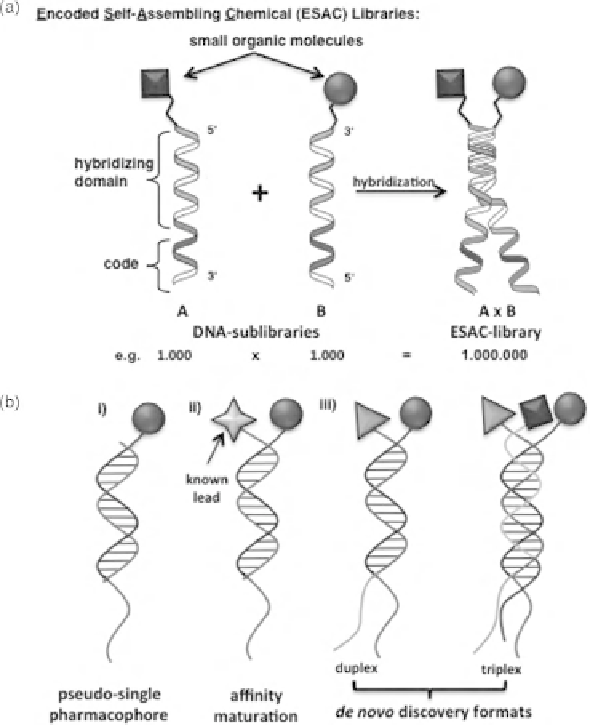Biomedical Engineering Reference
In-Depth Information
FIGURE 11.19
Encoded self-assembling chemical (ESAC) library technology. (a) Com-
binatorial self-assembly of relatively small partially complementary sublibraries (i.e., each
containing 1000 members) by DNA hybridization allows the generation of large combinato-
rial libraries (i.e., 1 million combinations). Typically, the first sublibrary displays chemical
entities attached at the 5
-extremity of single-stranded oligonucleotides, whereas in the second
sublibrary the chemical moieties are connected to the 3
-extremity of the encoding oligonu-
cleotides. The display of two neighboring chemical entities may enable simultaneous binding
of two compounds to adjacent nonoverlapping binding sites on a target protein, in full anal-
ogy to fragment-based drug discovery approaches. (b) ESAC technology can be used in at
least three different embodiments: (i) pseudo-single-pharmacophore format; (ii) affinity mat-
uration setting; (iii) heteroduplex (or heterotriplex) library for de novo discovery of binding
molecules.

